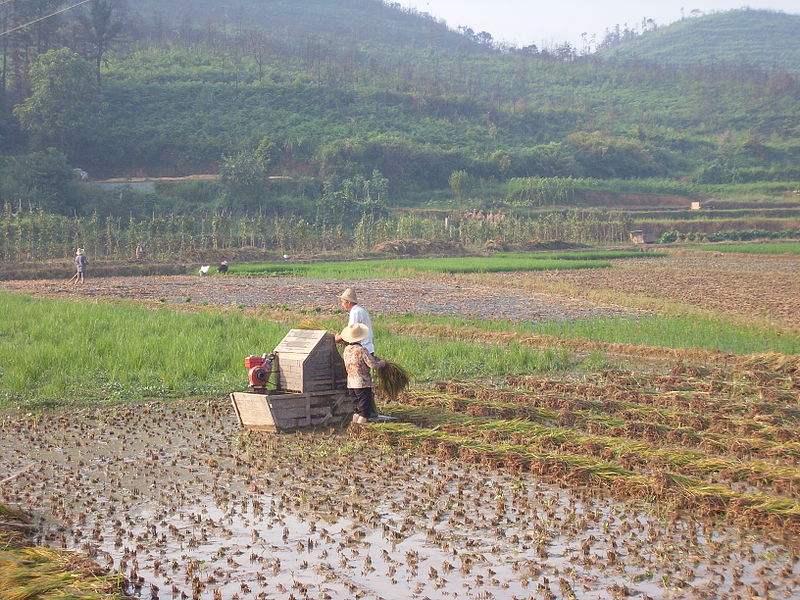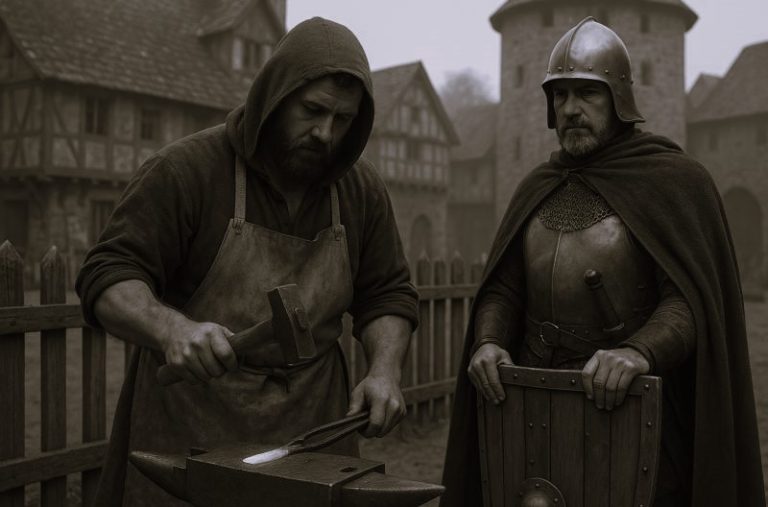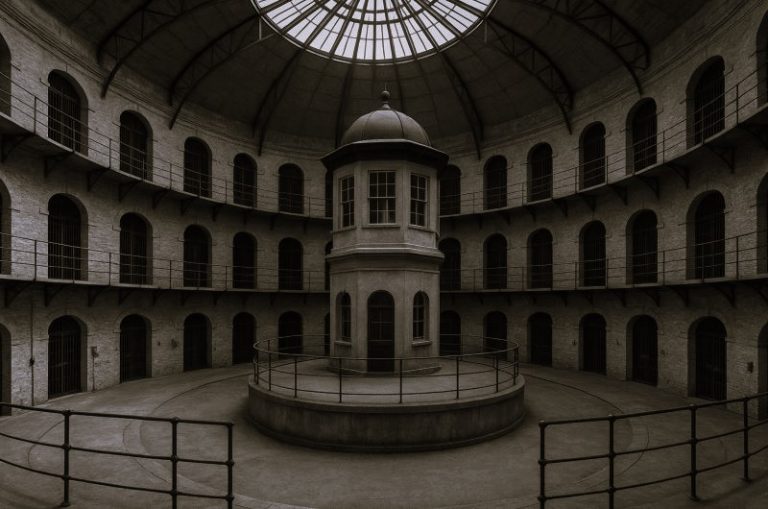

Introduction
The Song period was a time of great prosperity in China. Changes in agriculture, especially a boom in the production of rice, fueled the growth of the economy. Trade and business flourished. These developments had started during the Tang dynasty. Under the Song, they would help make China one of the most advanced economies in the world.
Along with prosperity came the growth of cities. During this period, China’s huge cities dwarfed the cities of medieval Europe.
An Italian traveler named Marco Polo first saw China toward the end of the Song dynasty. He marveled at China’s crowded cities and bustling markets. Polo was especially impressed by the boat traffic on the Grand Canal. This great waterway linked northern China with the Chang Jiang (Yangtze) river valley in the south. Farmers and merchants used the canal to ship their crops and goods. Polo wrote, “It is indeed surprising to observe the multitude [vast number] and the size of the vessels that are continually passing and repassing, laden [loaded] with merchandise of the greatest value.”
In this chapter, you will learn how changes in agriculture, trade and commerce, and urbanization made China so prosperous. Let’s begin by finding out how changes in agriculture improved China’s economy during the Tang and Song dynasties.
Changes in Agriculture
Changes in agriculture were a major reason for the growth of China’s economy during the Song dynasty. This period saw a huge increase in the production of rice, as well as new and better farming methods. Let’s look at how and why these changes happened.
Reasons for Agricultural Changes

There were several reasons for the changes in agriculture. The first was the movement of farmers to the fertile basins of the Chang Jiang in southern China.
During the Tang dynasty, northern China was the wealthiest and most populous part of the country. But wars and attacks by tribes from Mongolia drove many landowners to move south. Under the Song, southern China continued to grow. By 1207, about 65 million people lived in the south, compared to 50 million in the north.
The move to the south changed what farmers grew. Northern farmers had cultivated wheat and millet. These crops grew well in the north’s cold, dry climate. In contrast, the south’s climate was warm and wet. Wetlands covered most of the Chang Jiang valley. These conditions were ideal for cultivating rice plants, which need a lot of water.
Rice farmers, though, did face challenges. Rice crops were frequently destroyed by periods of drought and violent storms, called typhoons. Even if a crop survived, it took five months for the rice to mature from planting to harvest.
During the 11th century, a new variety of rice was brought to China from Southeast Asia. It was resistant to drought, and it matured in two months instead of five. Now farmers could plant at least two crops of rice each year. As a result, rice production in China boomed.
Production increased even more with new and better farming techniques and tools. An improved plow and harrow, a tool used to level plowed ground, made it easier to prepare fields for planting. Farmers also began using fertilizer to produce larger crops. A device called a chain pump, which used containers attached to a loop of chain to move water, helped farmers irrigate land at the edges of lakes, marshes, and rivers. To grow rice on hillsides, farmers created flat areas called terraces. More and more land was devoted to farming, and landowners became wealthier.
Characteristics of the New Agriculture

Picture yourself visiting a farming area in southern China during the 13th century. Small farms cover every bit of suitable land. Terraced hillsides spread as far as you can see. Rice grows on the terraces in flooded fields called paddies. Elaborate irrigation systems crisscross the paddies, bringing water where it’s needed.
Early in the growing season, you see water buffaloes pulling a plow and harrow to level the fields and prepare them for planting. The seeds have been growing in seedbeds for a month. Now, workers will transplant the young plants to the paddy.
Growing rice takes a lot of hard work done by many hands. In the fields, large numbers of workers walk backward as they transplant the rice plants in straight rows. Two months from now, the workers will harvest the rice by hand.
Before and during the growing season, the rice paddy has to be constantly watered and drained. Dams, dikes, gated channels, and chain pumps help to move water into and out of the paddies.
Although rice is the main crop, peasants grow tea, cotton, and sugar. They also grow mulberry trees. The leaves feed silkworms.
In the southern hill area, you see tea plants. The Chinese had once used tea only as medicine. But by the 9th century, tea was the national drink. Tea drinking became a social custom, and teahouses became popular. To meet the demand, farmers grew more tea.
Results of Agricultural Changes
The shift to growing rice was an important development for medieval China. First, it increased food production. The new abundance of food helped to support a larger population. For the first time, China’s population grew to more than 100 million people.
With ample food, peasants could take time away from farming to weave silk, cotton cloth, and other products to sell or trade. Rice farmers could also market their surplus rice. Landowners became rich enough from growing rice to buy luxury items. All these changes encouraged the growth of trade.
The Growth of Trade and Commerce
Trade and commerce were already underway during the Tang dynasty. Tang emperors eased restrictions on merchants, and they actively promoted trade. Products like rice, silk, tea, jade, and porcelain traveled along trade routes to India, Arabia, and Europe. Under the Song, business activity blossomed even more.
Reasons for Growth in Trade and Commerce

One reason for the growth of trade and commerce was that wealthy landowners were eager to buy luxuries. The demand for luxuries encouraged an increase in trade, as well as an increase in the number of Chinese artisans, who made silk and other goods.
Commerce was also helped by water transportation. A vast network of rivers and canals connected different parts of China. Farmers in central China could ship their rice north along the Grand Canal. Busy boat owners had plenty of business, because it was cheaper and faster to move goods by water than by road. A long boat with a flat bottom, called a barge, could travel 45 miles a day, compared to 25 miles a day for an oxcart.
Innovations in navigation helped increase foreign and overseas trade. Navigational charts and diagrams, along with the magnetic compass (a Chinese invention), made it easier for sailors to keep to their routes on long voyages.
With so much buying and selling, people needed currency. In the 11th century, the government minted huge numbers of copper coins—so many that there was a copper shortage. Therefore, moneylenders began issuing paper money to merchants. The idea caught on, and the government printed paper money in large quantities. The increase in currency further spurred the growth of commerce.
Characteristics of China’s Commercial Growth

Let’s take a trip on the waterways of China in the 13th century. Our first stop is a market town along a canal. The canal is crowded with barges loaded with rice and other goods. The barges are sailed, rowed, or pushed along with the help of long poles. Oxcarts and pack animals trudge along the roads and over the bridges that cross the canal. Peasants are coming to town to sell their surplus crops and animals, as well as items they have made at home, such as silk and charcoal.
On the streets and bridges, merchants have set up small shops to attract customers who are visiting the city. Street peddlers sell goods from the packs they carry.
You also see “deposit shops” where merchants trade long strings of copper coins for paper money. Paper money is much easier to carry around, but unlike copper, it has no value in itself. If there is too much paper money in circulation, it loses its value. For this reason, the government controls the amount of paper money that is available. It also threatens to cut off the heads of counterfeiters who print fake money.
Let’s continue our journey to a port city on the eastern coast. In the harbor, men are loading silk, ceramics, sugar, and rice into large sailing vessels called junks. These ships are big enough to hold several hundred men. Their sails are made of bamboo matting. The junks will soon depart for Korea, Japan, Southeast Asia, India, the East Indies, and even Africa. They will return loaded with indigo for making blue dye, spices, silver, ivory, and coral.
Results of the Growth in Trade and Commerce
The increase in China’s trade and commerce had several effects. First, it resulted in the growth of the merchant class. Second, business brought increased prosperity, giving China the highest living standard in the world at that time. Third, many commercial centers grew into big cities.
The Growth of Urbanization
Urbanization increased during the Song dynasty as cities sprouted up all over China. Chinese cities became the largest in the world. The city of Hangzhou had perhaps 2 million people within its walls. It’s no wonder that Marco Polo was impressed with the cities he visited. European cities of this period had no more than 50,000 residents.
Reasons for Urbanization
Why did the growth of cities increase under the Song? One answer is that the growth of commerce encouraged people to move to cities and towns. There, people could make a living as merchants, traders, peddlers, and shopkeepers. In addition, landowners left their farms because they preferred the shops and social life of the cities. More people brought still more opportunities for business and jobs, and cities grew even larger.
Characteristics of Cities

China’s cities at this time were crowded, exciting places. The crowds in Hangzhou astonished Marco Polo. He wrote, “Anyone seeing such a multitude would believe it impossible that food could be found to feed them all, and yet on every market day all the market squares are filled with people and with merchants who bring food on carts and boats.”
Let’s stroll through a typical 13th-century city. The streets are filled with rich landowners, merchants, traders, moneylenders, and visiting peasants eager to sell their surplus crops. Signs in the market area identify the goods sold in each shop.
In the entertainment area musicians, jugglers, acrobats, and puppeteers perform outdoors. People are enjoying the theater. They are visiting with friends in restaurants and teahouses. Food vendors carrying trays of food on their heads provide plenty to eat.
You might be surprised to see wealthy young girls whose feet are so tightly bound with cloth that their toes are bent under. These girls will grow up to have tiny feet, which the Chinese consider beautiful. But they will have great difficulty walking.
This custom of foot binding first became common during the Song dynasty. It marked a decline in the status of women. Some followers of Confucianism taught that women were inferior to men. In addition, women of the middle and upper classes in cities did not work. In the countryside, women enjoyed greater status because they did participate in work on farms.
Results of Urbanization
The growth of cities changed the way many ordinary Chinese lived. Cities were vibrant centers of activity, from buying and selling, to hobbies and board games. Public-works projects provided employment for many city dwellers. Urbanization also stimulated culture, giving artists an audience of wealthy, leisured people. Paintings produced during the Song period are considered some of the finest in the world.
Originally published by Flores World History, free and open access, republished for educational, non-commercial purposes.






